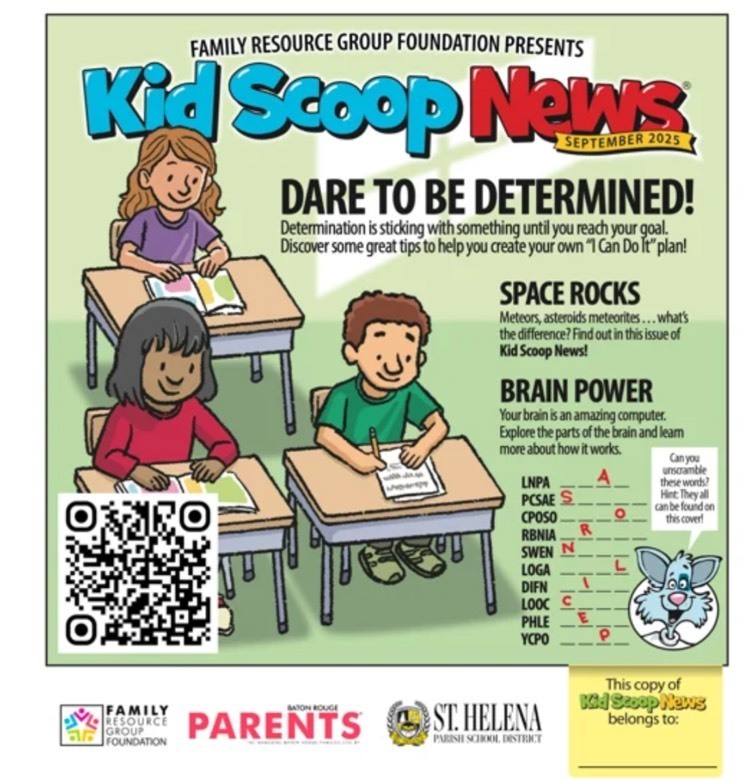What’s in the September 2025 Issue?
September is the perfect time to inspire students to set goals and believe in themselves. This month’s Kid Scoop News features tips for building an “I Can Do It” plan, fascinating facts about meteors, asteroids, and meteorites, an exploration of the brain and how it works, and a look at creative solutions helping wildlife cross highways safely. Plus, fun puzzles and games keep curious minds engaged and learning all month long!
Articles and activities include:
- What’s in the News? This story is about how animals in Canada’s Banff National Park use special bridges and tunnels to cross busy highways safely. Since they built these overpasses and underpasses, accidents between cars and animals have dropped significantly! It’s a great real-life example to talk about problem solving, nature, and how people can help animals.
- Spotlight—Dare to Be Determined! This article helps students understand determination and set goals using an “I Can Do It” plan. It encourages breaking big goals into small steps and practicing daily habits to succeed, perfect for building confidence and focus in the classroom.
- STEM—Space Rocks: This article helps students explore the differences between meteors, asteroids, meteorites, and meteoroids, all types of space rocks with different names depending on where they are. It includes facts about the asteroid belt, the famous asteroid that likely caused the dinosaurs’ extinction, and fun activities to label and match meteorites. This piece ties into science standards while sparking curiosity about our solar system’s history.
- American Legends—Febold Feboldson: This month’s legend is about Febold Feboldson, a giant Swedish farmer from the Great Plains. It’s a fun tall tale that shows how Febold cleverly brought rain to the land when things got too hot and dry. This story is perfect for sparking conversations about folklore, sequencing events, and connecting students to pioneer history.
- Health Focus—The Brain: This article talks about the three main parts of the brain and what they do. It explains how the brain helps us think, move, and keep our body working without us having to think about it. There are also fun facts and puzzles that help kids learn about the brain in a simple way. It’s a nice way to bring science into the classroom with activities that are easy to understand.
- Activity Calendar: September’s calendar is full of ideas to spark learning and creativity, from library visits, art projects, and reading challenges to nature walks, goal-setting, and acts of kindness. Perfect for keeping kids engaged every day!
- Animal Spotlight: This month, we meet the mighty silverback gorilla! Students will discover what makes them special, from their shiny “saddle” of hair to their giant appetites. With fun facts, math challenges, and even gorilla manners to learn, this article is perfect for sparking curiosity and laughter in the classroom.
- Money Matters—Big Birthday Shopping Spree: This month’s money lesson is all about budgets! Students join Thrifty and Fritter on a birthday shopping adventure with only $50 to spend. They’ll practice adding up prices, making smart choices, and seeing what they can afford without going over budget. A fun way to mix math skills with real-life money smarts!
- Parent Scoop—Spark Your Child’s Curiosity: This month’s tip is all about encouraging kids to ask questions and explore their own curiosity. Instead of giving answers right away, guide them to find the answers themselves. Try the “Find the Question!” game: read an interview article together, guess the reporter’s questions, and come up with new ones. It’s a fun way to boost reading skills, comprehension, and curiosity.
